MARKET OVERVIEW
The global mannitol market occupies a singular position at the intersection of innovation, changes in demand, and specialty industrial application that will continue to dictate its path outside conventional considerations. As a key ingredient in pharmaceutical, food, and chemical industries, mannitol has matured from its simple role as a sweetener to a substance of complex utility. Industries will most probably look into more advanced applications, breaking away from the generic model of consumer products or traditional drug formulation. The present perception of the market, mostly influenced by current end-use patterns, will no longer completely determine its future course.
The future of the global mannitol market is a period characterized by specialist partnerships and unconventional usage patterns. Pharmaceutical businesses will be looking to reassess mannitol's structural compatibility in sophisticated drug delivery systems. Aside from being an excipient, its promise in targeted therapies as well as novel oral dosage forms will unlock newer horizons. This move will not only improve the stability of drugs but also improve the efficacy and patient-friendliness of therapies. The food industry, also, will not just utilize mannitol for its sweetness or low-calorie properties. It will become a standard component of product forms designed to meet niche dietary requirements, especially within diabetic-specific or medical nutrition segments.
Growing geographies will not just absorb what has been made elsewhere. Rather, they will propel regional variations in mannitol's manufacturing, considering regional resources, legislation, and requirements. Manufacturing units can emphasize biosynthetic methods, abandoning customary extraction or chemical synthesis processes. This transformation will test the limits of cost-effectiveness and purity standards, triggering new issues relating to certification standards and global supply chains. Industry participants will need to project these complexities and adjust their strategies accordingly.
Research institutions and contract research organizations will start making a more explicit contribution towards the way mannitol is researched and consequently utilized. These institutions are bound to insist on research into such fields as neuroprotective agents, osmotic diuretics, and natural alternatives where mannitol's qualities could be used as a foundation for new findings. This line of research will determine the way regulatory bodies evaluate the compound, particularly in borderline classes where food and pharma blend.
Technology will not be merely an assisting system anymore but will revolutionize mannitol's processing and formulating scenario. Accuracy instruments, analytical equipment, and AI-computer modeling may decide particle size, crystalline form, and performance predictability to a very high accuracy. Such refinement will be of utmost importance in industries where mannitol is not a principal ingredient but an ingredient whose quality influences the entire product life cycle.
The global mannitol market will not only grow in numbers or size; it will come of age in terms of depth and application. Stakeholders who expect this change will not only ride the market they will drive it. The future will be complex, fueled by an imperative to rethink the molecule outside of its present designation, realizing potential in segments that currently only hint at possibilities.
Global mannitol market is estimated to reach $640.1 Million by 2032; growing at a CAGR of 7.4% from 2025 to 2032.
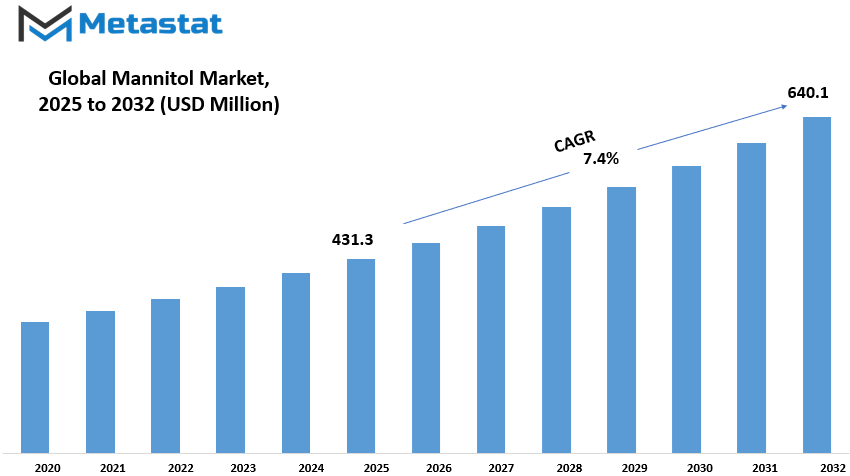
GROWTH FACTORS
The global mannitol market is growing steadily largely due to the increasing demand for low-calorie and sugar-free food and beverages. Increased health awareness has resulted in mannitol becoming a popular sweetener. It acts as a complementary low-calorie alternative to other sugars without actually increasing blood glucose levels, making it a highly suitable option for use in diabetic applications. Manufacturers, in their efforts to keep up with consumer demand for healthier alternatives, are increasingly introducing mannitol into a range of products such as chewing gums, chocolates, and baked goods. The rising demand for healthy sweet alternatives ultimately influences the demand for mannitol.
Another prominent force that varies the pace of the mannitol market is the steady rise in pharmaceutical and medical applications. Mannitol is crucial within therapies such as renal therapy and as a diuretic. It is primarily used for decreasing pressure in the eyes or brain and to assist kidneys to dispose of fluids. Because it is deemed to be highly effective and credible as a treatment, the medical community respects mannitol as they deem it to be safe and credible. Because the medical profession will seek to constantly improve and invest in better treatments, there will be an endless demand for mannitol in terms of pharmaceutical use.
Despite these strong growth drivers, the market also has some weaknesses. One of the largest is the cost of production. The purification process and the process of mannitol extraction are not only costly but also require advanced equipment and technical skills. This can make the product too expensive for some producers, especially in developing nations. Additionally, the production process is time-consuming and hard to scale up, which can affect supplies and hinder market growth.
Regulatory controls are also an issue. Since mannitol occurs in foodstuffs as well as in pharmaceuticals, it must undergo rigorous safety tests and receive approval from health agencies before it can be sold. Such approval processes are time-consuming and bureaucratically intensive, delaying product introductions and discouraging small firms from entering the market.
On the other hand, enhanced health and wellness awareness is unfolding new avenues for mannitol. Individuals desire ingredients that facilitate grabbing a healthy way of life, and the intake of mannitol will be boosted. Evolving consumer behavior is providing avenues for companies to produce and sell mannitol in shops. Provided that they carry out a good strategy, chances are standing the possibility of tremendous growth of the market of mannitol all over the world
MARKET SEGMENTATION
By Form
The global mannitol market is witnessing constant growth owing to its extensive application in many industries including pharmaceuticals, food and beverages, and personal care. Mannitol occurs naturally as a sugar alcohol in vegetables and fruits but is manufactured commercially mostly. As it has low caloric content and non-cariogenic nature, it finds application as a widely used sugar substitute, particularly among diabetic patients. With growing awareness of betters, mannitol is now being used more and more as a standard part of low-calorie and sugar-free products. Their consumption will drive demand in the long term. Mannitol relies heavily upon drug companies.
It's used as a diuretic and tablet carrier because it has good stability as well as an insignificant amount of moisture absorption. It also functions as a pressure-reducing agent in the brain and eyes and therefore has applications in emergency settings. Increased rates of chronic diseases and consciousness regarding health are creating higher levels of demands on safety and efficacy in excipients like mannitol. Mannitol is also employed in the food industry because it has a cooling sensation and hence is applied to foods like chewing gum, sweets, and peppermint. It does not ferment in the oral cavity, hence preventing tooth decay, and that contributes to its worth. Product form-wise, the global mannitol market - Form is also divided into Powder and Crystal.
Both of them are used for their respective applications based on the industry. Powdered mannitol is typically used in pharmaceuticals and food where smoothness of texture matters, whereas crystal type is used where a solid texture matters. Producers decide the form as per functionality and requirements of the final user, and hence it is possible to have a dynamic product development strategy. Additionally, greater investment in research and development of manufacturing technology will drive market growth. Improved production efficiency and cost-reducing initiatives by producers will make the product prices low and enhance availability, likely to drive market growth. Government support towards the use of sugar substitutes in food and drug products is also encouraging a positive attitude.
In summary, increasing concern over health, increasing demand for low-sugar products, and increasing pharma use are some of the major factors pushing the mannitol market towards growth. Based on its extensive area of application and favorable qualities, mannitol will continue to be in high demand in many industries and will create opportunities for increased market growth in the near term.
By End-Use
The global mannitol market is witnessing sustained growth, largely driven by increasing applications in major industries such as food, drinks, and medicines. Mannitol is a sugar alcohol used as a stabilizer and sweetener in foods. It is promoted to have a minimal effect on the blood glucose level and contains few calories and thereby becoming one of the top favorite ingredients for diabetics and low-carb diet promoters. In culinary application, mannitol is best seen in foods like chewing gums, candies, and bread. Its ability to add texture and a slight sweetness without added tooth decay makes it a critical food manufacturing additive. Growing demand for healthier food and sugar-free foods continues to drive the demand for mannitol forward.
In beverages, mannitol is used less for sweetness and increasingly as a flavor balance and mouthfeel contributor. It is also used to increase the stability and shelf life of drinks, especially those with extended storage needs. Since more consumers are turning to functional and low-calorie drinks, usage of mannitol in this industry is also expected to rise. The pharmaceutical industry is, however, still one of the largest users of mannitol. It is a common tablet excipient since it is bulking and binding in nature. It is also utilized as a diuretic in some medications and as a reducing agent for pressure within the eyes or brain in medical interventions. These different uses have had pharmaceuticals dominate the market.
The world mannitol market, broken down by end-use, as of the latest statistics, has pharmaceuticals in first place, followed by food and beverage. The market size in this industry has risen to \$159.2 million, and the outlook for growth is promising. Developments like increased awareness of health, growing demand for sugar substitutes, and increased research in medicine and food are set to continue fueling growth. The companies involved in mannitol manufacturing and distribution are conducting research to make it more functional, efficient, and cost saving. Though competition will be more intense, the demand for healthier, safer ingredients across a range of industries ensures that mannitol will remain a desirable ingredient on the global market in years to come.
|
Forecast Period |
2025-2032 |
|
Market Size in 2025 |
$431.3 million |
|
Market Size by 2032 |
$640.1 Million |
|
Growth Rate from 2025 to 2032 |
7.4% |
|
Base Year |
2024 |
|
Regions Covered |
North America, Europe, Asia-Pacific, South America, Middle East & Africa |
.
REGIONAL ANALYSIS
On analysis of the mannitol industry, the geographical segmentation incorporates five major regions: America, which includes North America and South America; Europe; Asia-Pacific; and Middle East & Africa. North America is the separation of the United States, Mexico, and Canada. The United States is a dominant player with the pharmaceutical Industry being quite prominent, and food industry usage being quite extensive for mannitol as a sweetener and stabilizer. Canada, on the other hand, bolsters the market with its health-conscious products and medical advancement; meanwhile, Mexico holds its position with medical advancement.
Europe consists of the U.K., Germany, France, Italy, and the Rest of Europe. With good healthcare systems charging for steady demand of low-calorie sweeteners, this part supports the use of Mannitol in pharmaceutical and food processing industries. Germany and France are somewhat well-known for promoting research and innovation; hence, in a way, they have resulted in the application of Mannitol. Italy and the U.K., however, contribute on some scale due to slight development within the food manufacturing sector.
The Asia-Pacific includes India, China, Japan, and South Korea and the Rest of Asia-Pacific. This area possesses strong growth potential resulting in varying population, urbanization, and increasing awareness of the low-sugar product range. India and China, second to none as consumers of processed food, have always had an increased level of demand for Mannitol-based products. On the other hand, Japan and South Korea with an existing array of healthcare infrastructure contribute much more toward the slight end, especially pharmacy. It is one of the significant applications of Mannitol.
South America includes Brazil, Argentina, and the rest of South America. Brazil is a new implementation with an emerging healthcare sector and growing demand for food sugar substitute. The other countries are progressing, with those industries eventually increasing Mannitol uses for food and medical purposes.
For Middle East & Africa, the countries under consideration are the GCC Countries, Egypt, and South Africa, and Rest of Middle East & Africa. The market here is not mature yet; however, there is perceptible graphing. South Africa and the GCC countries are beginning to invest more and more into health and wellness businesses, thus encouraging consumption of ingredients such as Mannitol. Egypt and the rest of the Middle East follow progressively with increased awareness and demand of diabetic and sugared-free products.
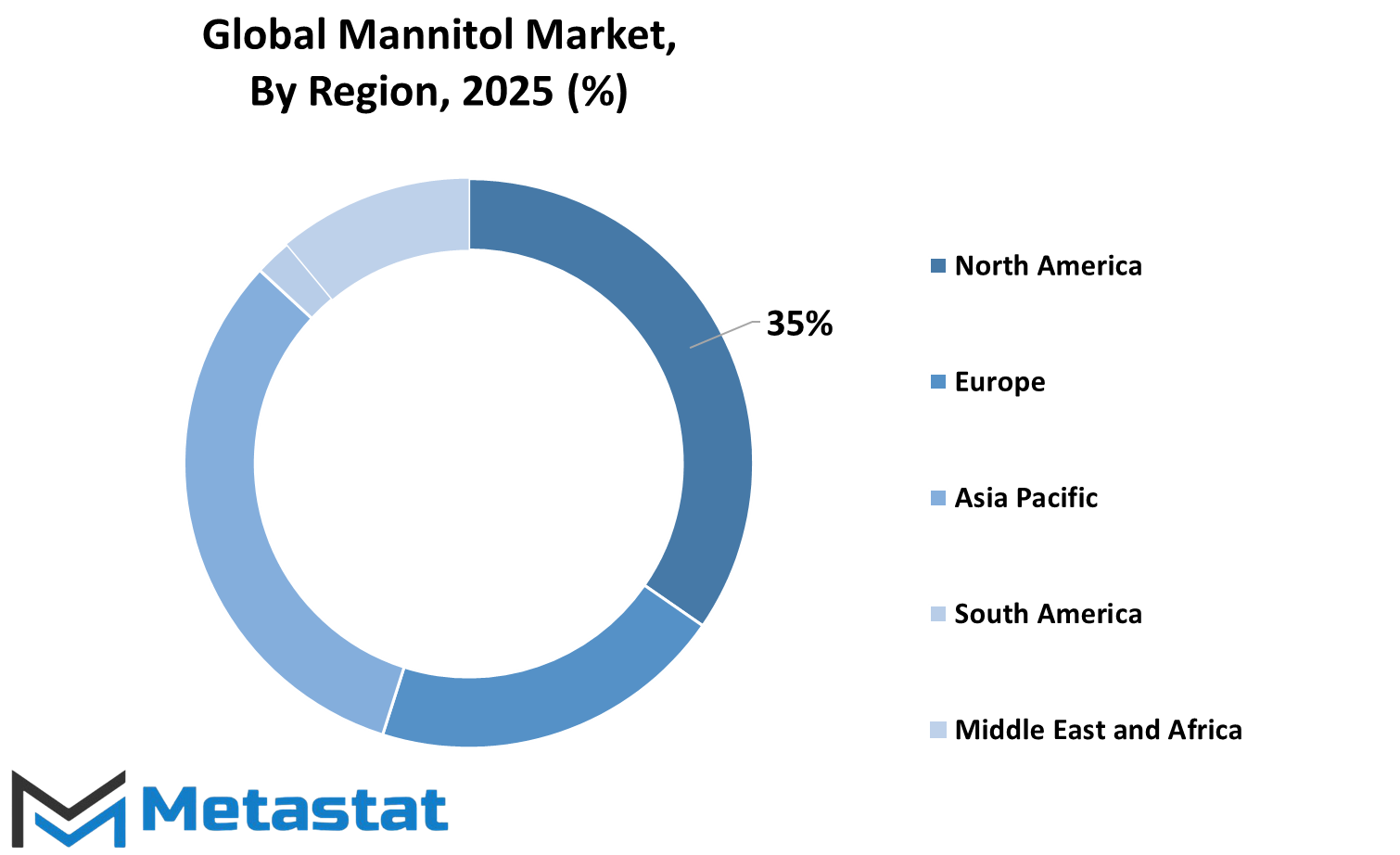
COMPETITIVE PLAYERS
The global mannitol market is experiencing stable growth with the growing use of Mannitol in the pharmaceutical, food, and personal care sectors. Mannitol, which belongs to the category of sugar alcohols, is commonly utilized as a sweetener as well as a drug. In the food sector, it is primarily employed as a low-calorie sweetener in diabetic and sugar-free foods. Because it will not produce an instant spike in blood sugar levels, it's frequently applied in diabetes products. It is also cooling in action, which places it among popular choices for menthol-flavored products such as gums and sweets. Mannitol serves as a diuretic in medicines and may decrease brain and eye pressures. It is also widely used in tablets as a filler because of its chemical stability and good taste. Its texture-enhancing properties make it worth using in food and medicine.
With more individuals becoming health-conscious and seeking low-calorie or sugar-free products, the demand for Mannitol keeps increasing. The pharmaceutical industry's requirement for safe and effective ingredients also contributes to the growth of the market. Application of Mannitol in personal care products such as toothpaste and mouthwash is also on the rise due to its sweetness and cooling sensation, enhancing user experience without damaging dental health. Furthermore, Mannitol's natural origin usually from seaweed, sugar, or corn positions it as a popular ingredient for clean-label products. Today's consumers desire ingredients that are not just safe but identifiable, and Mannitol aligns with this need.
Major players in the Mannitol market are Roquette Frères Company, Cargill Inc., SPI Pharma, Qingdao Bright Moon Seaweed Group Co., Spectrumchemical manufacturing corp., Hebei Huaxu Pharmaceutical Co. Ltd, Rongde Seaweed Co. Ltd, Ingredion Incorporated, Zuchem Inc., Akhil Healthcare (P) LTD., Pfizer, ADM, Boehringer Ingelheim, DuPont (Danisco), E.Merck KG, Foodchem International Corporation, and Meda Pharmaceuticals Inc. These firms are constantly striving to enhance production methods, diversify their product lines, and penetrate new markets. As the market keeps expanding, competition between these firms is likely to fuel innovation and enhance product quality. With increasing demand in different industries and constant product development, the Mannitol market will most likely continue to be robust in the future.
Mannitol Market Key Segments:
By Form
- Powder
- Crystal
By End-Use
- Food
- Beverages
- Pharmaceuticals
Key Global Mannitol Industry Players
- Roquette Frères Company
- Cargill Inc.
- SPI Pharma
- Qingdao Bright Moon Seaweed Group Co.
- Spectrumchemical manufacturing corp.
- Hebei Huaxu Pharmaceutical Co. Ltd
- Rongde Seaweed Co. Ltd
- Ingredion Incorporated
- Zuchem Inc.
- Akhil Healthcare (P) LTD.
- Pfizer
- ADM
- Boehringer Ingelheim
- DuPont (Danisco)
- E.Merck KG
- Foodchem International Corporation
- Meda Pharmaceuticals Inc.
WHAT REPORT PROVIDES
- Full in-depth analysis of the parent Industry
- Important changes in market and its dynamics
- Segmentation details of the market
- Former, on-going, and projected market analysis in terms of volume and value
- Assessment of niche industry developments
- Market share analysis
- Key strategies of major players
- Emerging segments and regional growth potential



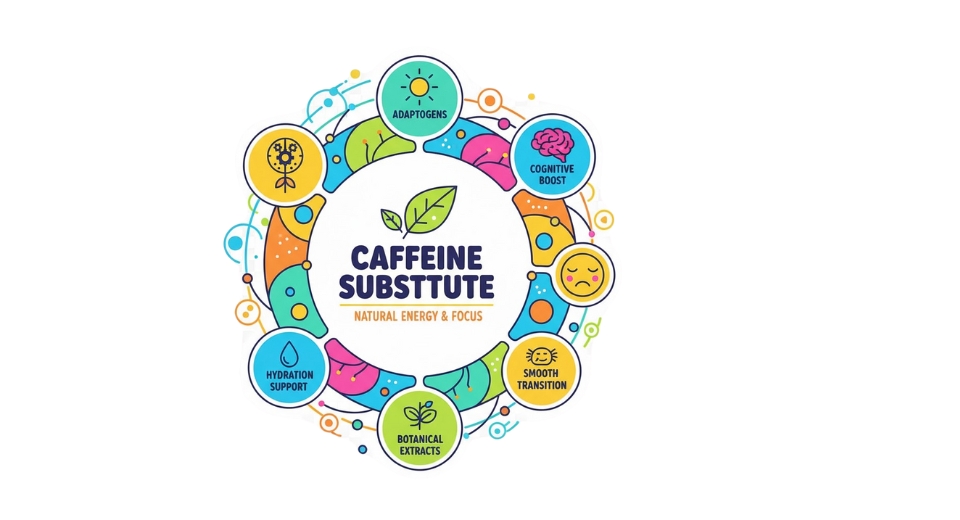
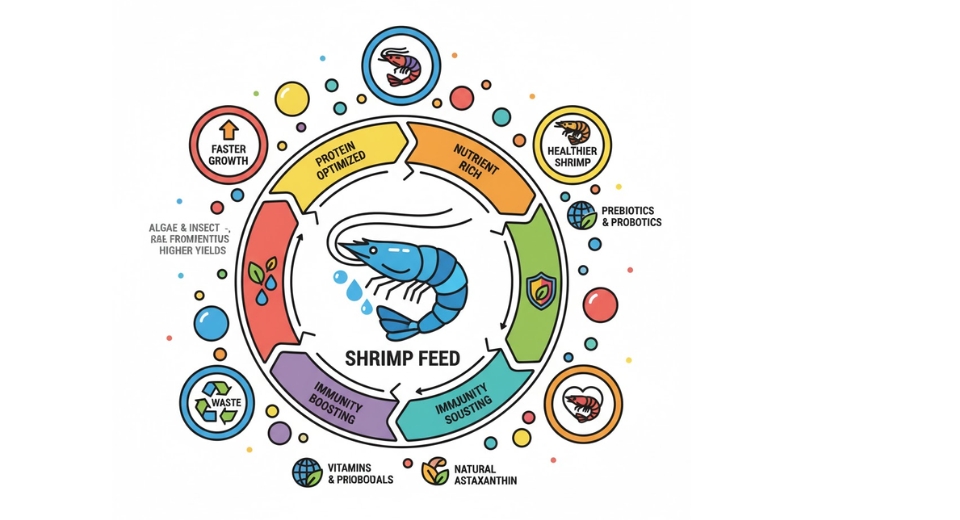
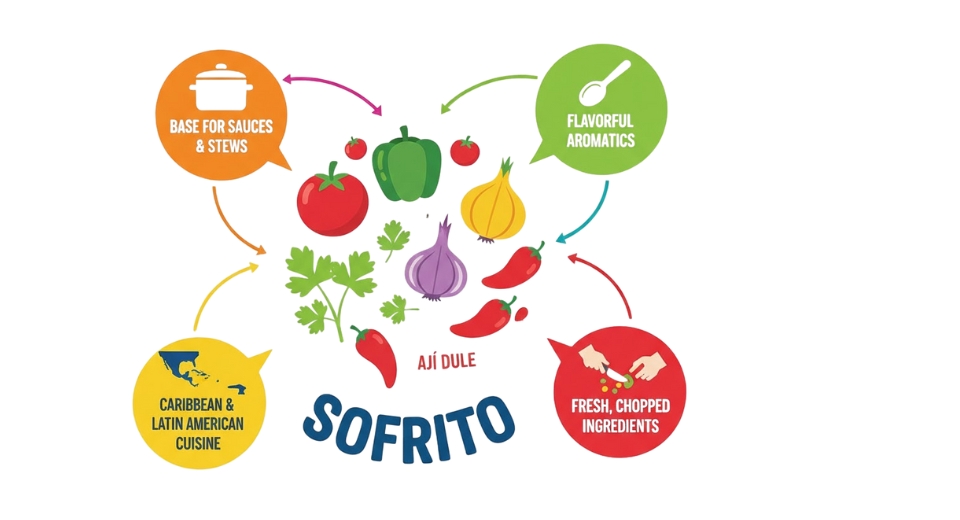
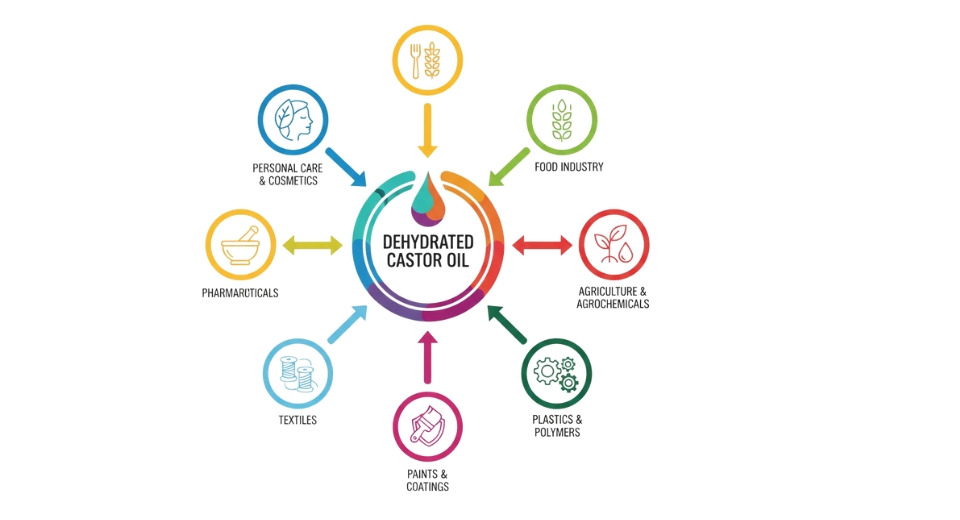

 US: +1 3023308252
US: +1 3023308252






